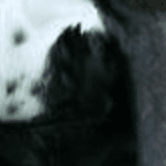Facts & Origin
Profile: Shorthaired Collie
The Shorthaired Collie, also called Smooth Collie, originates from Great Britain, where it was bred as early as the 19th century. The origin of this breeding was the desire for a hardy, easy to care for working dog, ideally suited for herding sheep. Over time, it has established itself not only as a working dog, but also as a popular family dog.
Characteristics and Suitability
The Shorthaired Collie is characterized by the following traits:
- Temperament: Lively, intelligent and friendly
- Size: Medium size, between 51 and 61 cm shoulder height
- Weight: 18-29 kg depending on sex and individual characteristics
- Coat: Short, dense and smooth lying
- Colors: Sable, Tricolour or Blue Merle
Thanks to its intelligent and alert nature, it is excellent as:
- Working dog: especially in the field of herding livestock.
- Family dog: Thanks to its friendly and patient nature.
- Companion dog for sports and leisure: His agility and energy make him an ideal partner for activities such as agility, obedience or dog dancing.
Care and attitude
The coat of the Shorthaired Collie is easy to care for, but should be brushed regularly to keep it clean and healthy. You should make sure to provide him with enough exercise and mental stimulation to take full advantage of his physical and mental abilities.
Conclusion
The Shorthaired Collie is a versatile and loyal four-legged friend that is excellent as a working dog as well as a family member. With his friendly nature and lively temperament, he is sure to delight you.




| Alternate Name | Smooth Collie, Collie Smooth |
| Origin | Scotland |
| Life expectancy | 10 - 14 years |
| Care requirements | low-maintenance |
| Activity level | average to high |
| FCI group | Sheepdogs |
| AKC group | working group |
| KC group | working group |
Shorthaired collie mixes
Attitude, character and temperament of the breed
Insight into the nature
The Shorthaired Collie, also known as the Smooth Collie, is characterized by a remarkable and versatile nature. In his origins as a herding dog, he developed character traits that still distinguish him today.
Character traits at a glance
Intelligent and eager to learn: The Shorthaired Collie is considered one of the most intelligent dog breeds in the world. This intelligence, coupled with his eagerness, makes training with him a real pleasure.
Loyal and affectionate: This dog is extremely people-oriented. He bonds tightly to his family and often shows a strong protective instinct.
Sensitive: He is sensitive to the moods of his people and reacts empathically. Therefore, training methods should always be positive and without harshness.
Active and playful: Originally bred for herding sheep, he has a natural working instinct. This means that you should provide him with enough exercise and mental activity.
Ideal living conditions
- Living situation: although he can adapt to a variety of living situations, the Shorthaired Collie prefers a home with a garden where he can roam freely.
- Occupation: This dog loves to have chores to do. Whether training tricks, agility or other dog sports, he will be enthusiastic about it.
- Social contacts: The Shorthaired Collie is very social and usually gets along well with other dogs. However, he should be well socialized as a puppy.
Conclusion
The Shorthaired Collie is a loyal, intelligent and active companion that builds a strong bond with its human. With proper training and enough activity, he will become an ideal family and sporting partner. If you are looking for a sensitive, loyal dog who is willing to work, you will find a true friend in the Shorthaired Collie.
Character
Usage
Care of the Shorthaired Collie
The Shorthaired Collie, also known as the Smooth Collie, has a short-haired, yet dense coat that requires regular grooming.
- Coat Care: The coat should be brushed at least once a week to remove dead hair and prevent matting. More frequent brushing may be necessary during shedding periods.
- Ears, eyes and teeth: these should be checked regularly and cleaned as needed. Tartar buildup can be prevented with special dog toothpaste or chewables.
- Claws: If they do not wear down on their own, the claws should be trimmed at regular intervals.
Health of the Shorthaired Collie
Although the Shorthaired Collie is considered a hardy breed, there are some health issues that should be considered:
- Hereditary diseases: Like many breeds, the Shorthaired Collie can be prone to certain genetic diseases, these include Collie Eye Anomaly or the MDR1 gene mutation.
- Regular checkups: An annual visit to the veterinarian for preventive examinations is recommended.
- Nutrition: A balanced and high quality diet supports the health and longevity of the dog.
Breeding of the Shorthaired Collie
When breeding Shorthaired Collies, special attention should be paid to the health and temperament of the breeding stock.
- Breeding standards: These define the ideal physical characteristics and temperament of the breed. Breeders should strictly adhere to these.
- Health Testing: Potential breeding stock should be tested for known hereditary diseases.
- Socialization: puppies need to be well socialized early on to ensure they grow into well-adjusted adults.
Conclusion
A well cared for and health monitored Shorthaired Collie is a happy and fun-loving companion. If you are interested in a puppy, you should always contact reputable breeders who value the health and temperament of their animals.


General appearance
The Shorthaired Collie, known in some circles as the Smooth Collie, is an elegant and harmoniously built dog. It combines elegance with functionality and has a well-proportioned silhouette.
Height and Weight
| Gender | Height (cm) | Weight (kg) |
|---|---|---|
| Males | 56-61 | 20-29 |
| Bitches | 51-56 | 18-25 |
Values may vary individually, but provide a general overview of breed standards.
Coat & Color
The coat of the Shorthaired Collie is, as the name suggests, short. However, it lies close and smooth and has a fine texture. A distinctive feature of the Shorthaired Collie is its double-layered coat, consisting of a dense undercoat and a smooth, resistant topcoat layer.
Possible color variations are:
- Sable: a combination of light and dark hairs, usually with a white collar marking.
- Tricolour: Black coat with tan markings and white markings.
- Blue Merle: A silvery to gray coat with black patches or markings.
Conclusion
The Shorthaired Collie is an impressive looking dog with a low maintenance coat. Proper grooming and attention to size and weight will keep this elegant four-legged friend in top shape.
| Fur length | long |
| Fur | flat coated |
| Ear shape | Standing Ears |
| Tail | fanned out |
| Anatomy | sporty |
| Size ♀ | 51 - 56 cm |
| Weight ♀ | 21 - 36 kg |
| Size ♂ | 56 - 61 cm |
| Weight ♂ | 25 - 30 kg |
| Suitable For | - |
Colors
Known Diseases
MDR1 defect
The MDR1 defect is a defect in the MDR1 gene that can occur in some breeds of dogs and in humans. This results in the deficient or absent synthesis of a certain protein which is an important component of the blood-brain barrier, leading to hypersensitivity to some drugs.
Eye diseases
Often occur with allergies and intolerances.
Metabolic diseases (cystinuria)
Cystinuria is a hereditary metabolic disease. Affected dogs lack a transport protein for certain amino acids (protein building blocks). In the kidney, the task of this transport protein is a return transport of amino acids from the urine into the bloodstream.

























